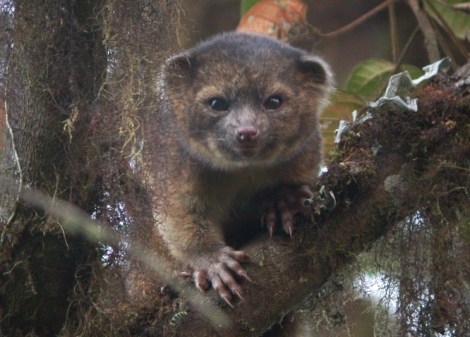Hello, olinguito.
You would think, given how into cute, fuzzy animals humanity is, that we would have noticed one “red, furry creature” that looks like “a cross between a house cat and a teddy bear” or “a raccoon with a teddy bear face that is so cute it’s hard to resist.”
But the olinguito lives high in the high Andes, in foggy cloud forests. It’s nocturnal. It mostly stays in trees. And so, until a Smithsonian researcher started looking for it, no one knew it existed. It’s the first new, carnivorous mammal to be identified in the Americas in more than 30 years. (The last one was the Colombian weasel, which was identified in 1978 and is less cute. Much less cute.)
Plus, humans are dense and not always as observant as we like to think. One olinguito, named Ringerl, lived in five different U.S. zoos over many, many years, but everyone just thought it was a weird olingo — a related species — that didn’t like other olingos. The AP reports:
The zoo’s little critter, named Ringerl, was mistaken for a sister species, the olingo. Ringerl was shipped from zoo to zoo from 1967 to 1976: Louisville, Ky., Tucson, Ariz., Salt Lake City, Washington and New York City to try to get it to breed with other olingos.
It wouldn’t.
“It turns out she wasn’t fussy,” Helgen said. “She wasn’t the right species.”
If this discovery does nothing else for the remote species, at least we can be assured that no olinguito will suffer the indignity of being asked to mate with mere olingos again.





